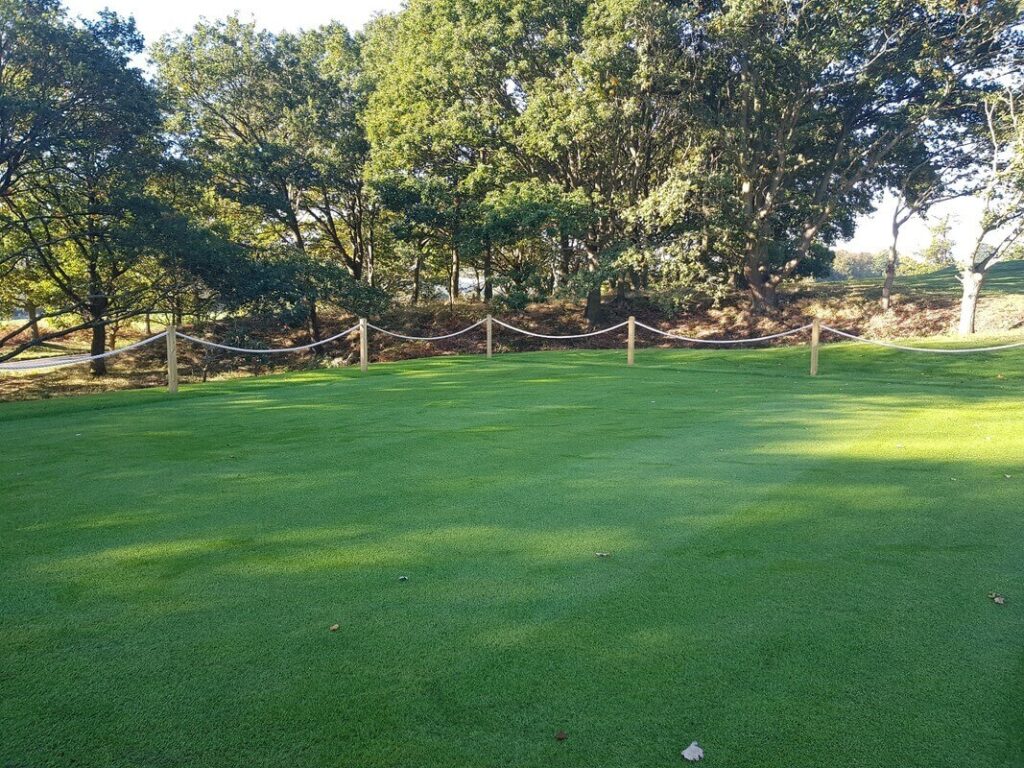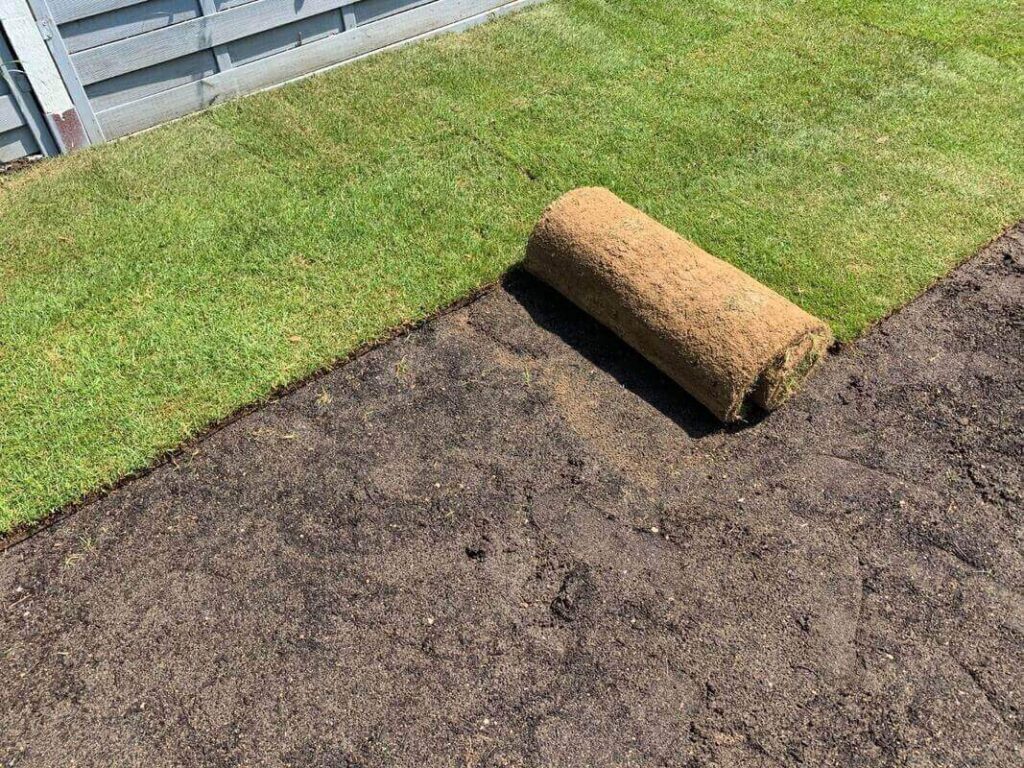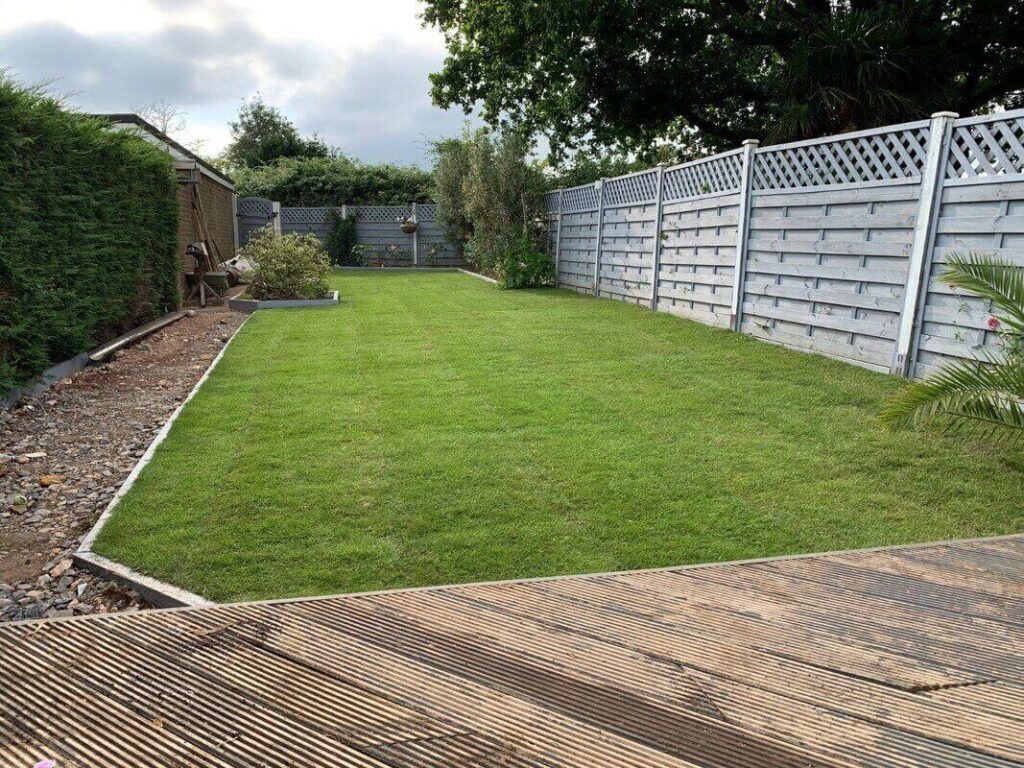
It’s June and so that means only one thing for gardeners – turf envy! We’ve only just got over the wonders of the RHS Chelsea Flower Show, which resulted in us re-planning the entire garden, and swift on its heels come two sporting events that represent the epitome of quality turf – Wimbledon Tennis Championships and The FA Cup at Wembley.
So, now the focus turns to making every inch of grass around our plots into a mini Centre Court or hallowed turf. Whether you’re laying turf for the first time, creating a new lawn area or seeking to reinvigorate an existing grassy space, you’re going to have questions.
We’ve helped develop thousands of acres of lawn with a combination of our quality topsoil and turf and so we feel well placed to offer some advice to would be pitch and court connoisseurs. Here our team offer you some ideas, tips and answers to the key questions.
Top 3 Turf Tips
Get your foundation right
First things first, before you even think about turf, you need to make sure you have the right base. That means high quality, organic, peat free topsoil. Grass can grow anywhere but if you’ve got a good quality base it will lay easier, take faster and stay green for longer. Good lawns require deep roots so light soil with good drainage which promotes the roots searching deeper for water is ideal.
Double dig
This is quite an old concept but it works. If you’re working over existing land before laying turf, dig down two spade depths to turn the soil. Even if it’s good soil, you may also do well to dig through some fresh topsoil or soil conditioner to help build the nutrient level. Once you’ve turned the area over, leave it for a few days – ideally to get some rain into it but also to allow bigger clumps to break down leaving a light, even surface level.
Turf, don’t seed
If you’re genuinely aiming for Wembley or Centre Court, don’t leave it to chance. Whilst seed is infinitely cheaper on a per square metre basis, the time it takes to set and grow allows all sorts of other seed to mix in with it and as we know, once a perennial weed takes root, you’ll never shift it. For a quality, even finish with consistent genus of grass, let the experts take the risk and buy ready-to-lay turf.

How much turf do I need?
Turf is normally supplied in 1m2 strips, but they are not square. Square turf is unwieldy and hard to lay evenly and so in order to roll it and make it easier to transport and lay, each turf is just over a metre-and-a-half long and around 60cm wide. As a simple rule of thumb you can work out the square metreage of the area to be turfed and buy turf on a 1:1 basis e.g. 100m2 = 100 turfs. However, we would always recommend buying around 5% more than you require to manage any patches and allow for overrun.
If your area happens not to measure in exact metres, then by all means use our handy turf calculator to put in your exact measurements and be sure of the correct amount to order.
When is the best time to lay turf?
In the UK grass tends to grow, to some extent, for around 10 months of the year. Growth is most vigorous from April to June and so this is undoubtedly the best time to establish a new area of lawn. Whilst you can lay turf later in the summer, the hotter, drier conditions will require more husbandry and watering and there is a higher chance of individual turfs not taking. Ultimately you want the turf to be established with a good root system before the Autumn comes, growth slows and the risk of significant, continued rain and frost increase.
Before April, you may find that the soil is not warm enough and therefore the roots will take longer to bed in. Effectively, what you want to do is lock in some heat by laying the turf, like a blanket over Spring warmed soil.
How long does turf take to root?
There are many variables to this answer, most of which we have covered above. But if you have purchased high quality turf, you’re laying it in the peak growing season (April to June), you’ve double dug and/or put quality topsoil underneath and you keep on top of the watering, the turf will have started rooting in around 10 days and within a month will have established a really strong root system.
Beware of turfs that have been lifted and stored for a longer period. The root systems begin to die back quickly and so ideally you want to be laying freshly lifted and rolled turf so the roots are out of the ground for the least time possible.

How to care for my lawn once laid
There are a handful of top tips to follow once you’ve laid your lawn.
- Don’t walk on it – this sounds obvious but the loose soil underneath will give way and you’ll create humps and bumps which will harden as the soil dries out. This could cause problems which are hard to fix in years to come. If you can, avoid walking on the newly laid turf for as much as a month, but for at least two weeks and certainly until it’s had several good sequences of watering/rain and dry.
- Don’t roller it – turf will root faster if the is air circulating through the soil beneath. Ultimately you need to avoid compaction. Compaction stops the air and water from filtering down into the soil and likewise the roots. Any peaks and troughs that occur naturally can be dealt with in due course but if you’ve prepared the land and laid your turf onto well dug, quality soil that has been raked level, then there should be no need to run a roller over it.
- Water less but for longer – avoid short spells of watering on a regular basis and instead water for longer, and less frequently. When water hits the ground it needs to sink down, through the turf and into the soil; the roots will then chase it. The deeper the water, the stronger and deeper the root system. If you only water lightly, the water will never penetrate through the turf and your roots will sit above the ground level.
- Scarify and aerate – we’ve shared articles on both scarifying and aerating your lawn, why you need to do it and when you need to do it. This is really important to the continued maintenance and good health of your lawn. Don’t do it in the first season after laying your lawn as you will disturb the root systems and may accidentally lift some turfs but make scarifying and aerating part of your regular maintenance.
- Feed carefully – many of the lawn feeds available at garden centres are intense but often short lived. They are designed to kill weeds and green the grass rather than necessarily feed the root systems. Liquid feeds, slow-release granules and those designed specifically for roots rather than leaves are the best options. Like aeration and scarification, don’t add any feed during the first season as it can often be too potent and can end up killing grass and roots rather than strengthening them.
Whilst a beautiful, lush green stripy lawn is a thing to behold, like all aspects of the garden it should be there to enjoy. Even Wembley and Wimbledon are there to be played on and so don’t forget to enjoy your lawn and it will reward you for all the hard work, care and attention. Once you think you’ve nailed it, it’s probably best to avoid the Ryder Cup coverage in early September – those fairways and greens are a sight to behold!



